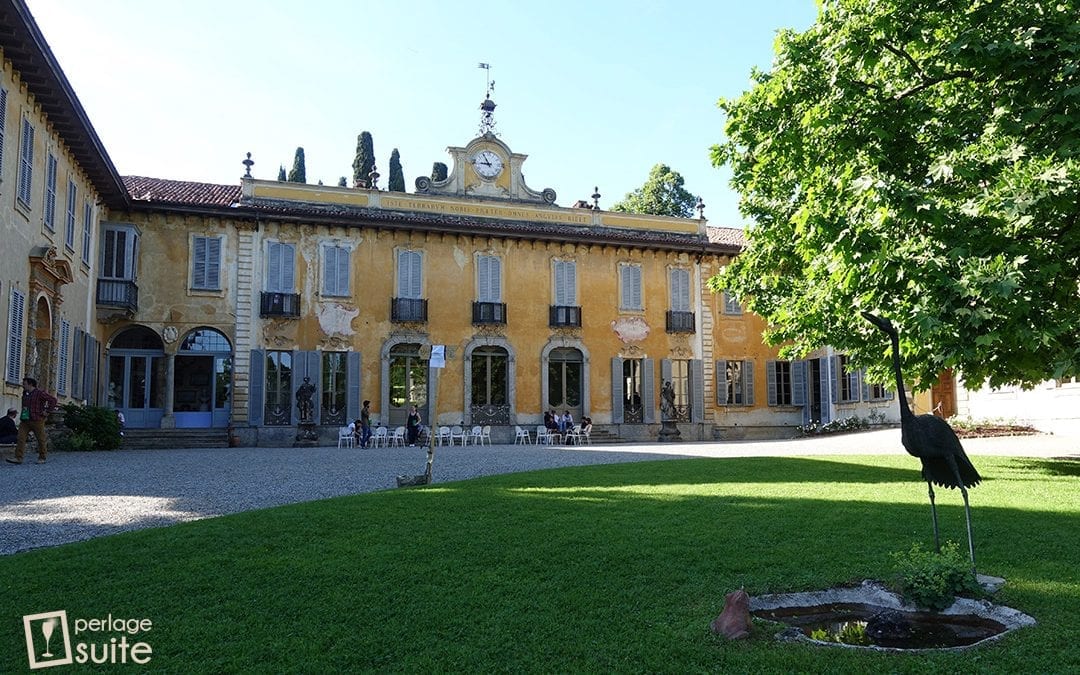I drink like this is the event dedicated to ethical wine, now in its fourth year. In a charming location, Villa Sommi Picenardi at Olgiate Molgoraover 450 natural, organic and biodynamic wines from all over Italy... and even from abroad! The kermesse was organised by Andrea Sala (That's Wine - Distribution of natural, organic and biodynamic wines) and Andrea Pesce (Vini e Più... Posteria e Caffè di Cantù) and publicised with the help of Nicola di Maso of the Luxury Bureau press office in Milan. When my sommelier colleague, wine blogger and dear friend Gabriele Scalici asked me to go, I was only too happy to pass the invitation on to my dear friend Annabella since she lives right around there!

I drink like thisOrganic wines yes, organic wines no... there is a lot of talk about organic wine in the world of wine, and there are those who exalt it and those who demolish it, as in all things after all! Personally, when it comes to organic wine I do not feel 'biased'. I like 'good' wine and if it is also 'organic' I am more than happy! As far as biodynamic is concerned, on the other hand, I imagine the producers armed with horn manure singing the praises of some fertility god while they bury the horns of cows that have calved at least once filled with preparation 500...
Preparation 500 used in biodynamic viticulture. The preparation consists of cow dung stuffed into the hollow of a horn from a cow that has calved at least once. The horn, once filled, is buried and left to ferment over the winter. The mixture is recovered in the days leading up to Easter, when it has turned into humus and has lost the smell of manure and acquired the noble smell of the undergrowth. It is then distributed, mixed and diluted with water (in jargon, dynamized), with the (alleged and unproven) aim of increasing the soil's yield.
source: Wikipedia
But what is an organic, biodynamic or natural wine?
- ORGANIC WINEThis is wine made from certified organic grapes where plant protection products, fertilisers, herbicides and synthetic pesticides are expressly forbidden, vinification takes place without adjuvants and additives and the few products permitted must be of organic origin and the amount of sulphur dioxide present is reduced compared to conventional wine. In addition, producers must be certified by the competent body and take three years to convert to organic.
- BIODYNAMIC WINE: wine obtained by following the dictates of Rudolf Steiner's biodynamic agriculture. Although there is no legislation on the subject, one can define biodynamic wine as an 'organic' wine (often/almost always non-certified) obtained using a 'holistic' approach whose efficacy has no scientific basis. I personally believe that everything, before being verified by science, still had no scientific basis. That is why perhaps, among the various biodynamic practices, something that gives real benefit can certainly be there. Generally speaking, however, I cannot agree with the dictates of biodynamic agriculture even though I have respect for the Steinerian philosophy. Unlike organic viticulture, there are no studies showing that biodynamic viticulture increases the quality of the wine produced.
- NATURAL WINEThis is wine made following the dictates of organic and/or biodynamic agriculture whose producers, however, refuse to adhere to either 'philosophy' so as not to feel trapped in a series of laws and axioms that, not being written for them, would only homogenise the wines they produce, effectively distorting their uniqueness. Here, I personally embrace the philosophy of natural wines. While certifying oneself as an organic producer may at least make sense from a strictly commercial point of view (there is a lot to be said for it... shall we talk about an organic wine made from grapes coming from a certified organic vineyard that is, however, more or less close to a chemical plant?), joining the biodynamic movement is something that in my opinion restricts the possibilities of a winegrower without guaranteeing an effective benefit. Better therefore to consider organic and biodynamic as a menu from which to choose the best courses.
In this regard, I would like to point out to you, if you would like to delve deeper, some interesting reading you can find on Amazon on organic and biodynamic:-
Wine au naturel: towards reconciliation between wine and the earth
-
Organic viticulture and oenology. Market, management techniques, defence, vinification and costs (very well done, it is a perfect book to approach this world with knowledge)
- Vine, wine and biodynamics (in my opinion a must-read to understand 'what we are talking about')
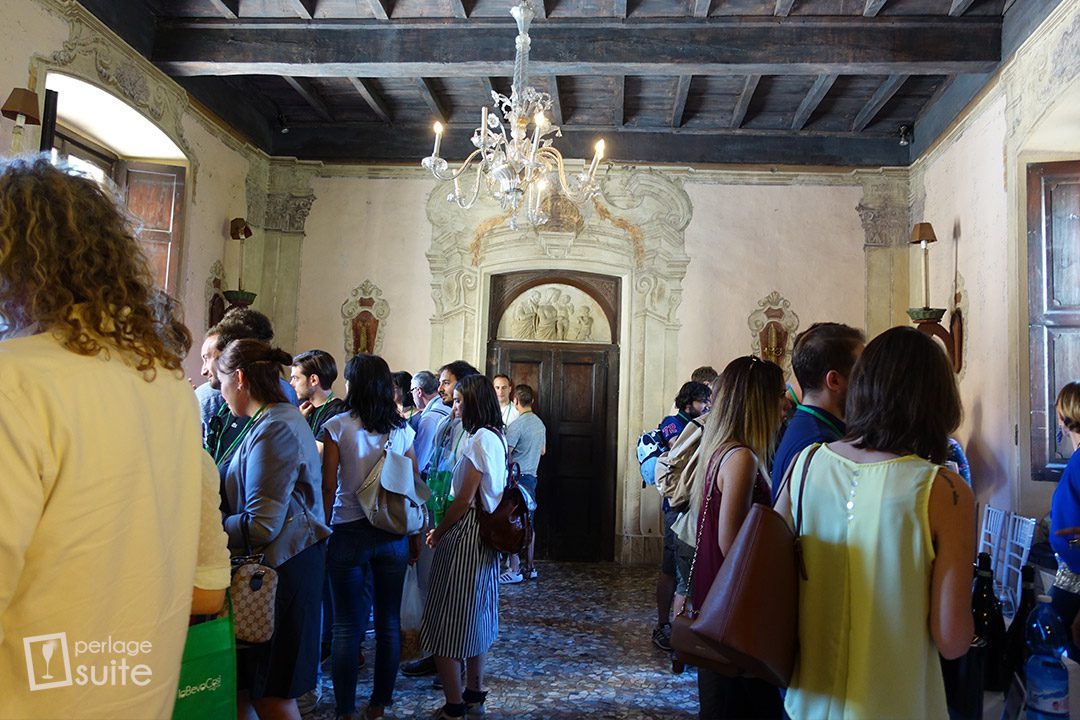
This is how I drink: the wines that impressed me
Weißburgunder 2001, Bretz Jörg - Austria
Of all of them, it was my favourite tasting for this fourth edition of I drink like this, although those who know me know that I hardly appreciate still white wines unless they are Rhine Riesling 100% with a hydrocarbon so strong that I fall in love with them. Yet this pinot blanc comes with incredible longevity: 16 years and not feeling it! Perhaps it is because I had just tasted a wine from the Marche region that to call it 'tired of living' is a compliment (and it was a 2007 vintage), but I really appreciated the cleanliness, the ripe aromas that blend with an incredible freshness and that touch of wood that gives this Bretz Jörg Weißburgunder 2001 a really pleasant character. An extraordinary wine with excellent value for money! Definitely a winery 'to be explored' in the future, perhaps in Austria 🙂 🙂 I certainly found it a winery 'to be explored' in the future, perhaps in Austria.
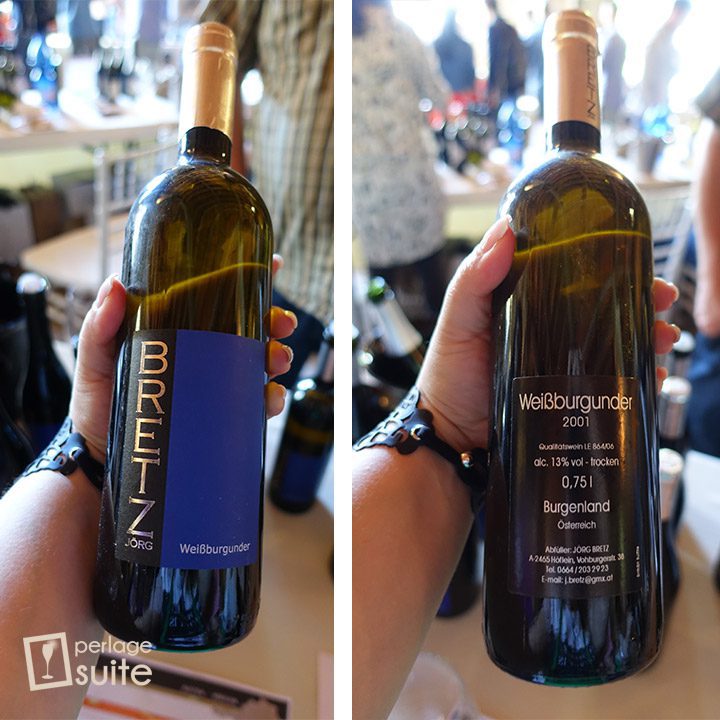
Pas Operé Millesimato 2012, Ca del Vent - Lombardy
To taste the sparkling wines of Ca del Vent exhibited in this edition of I drink like this I was taken there by Gabriele Scalici who, as always, never (almost never) misses a beat when it comes to tastings. (And nothing, I just didn't like those 'tired of existing' wines from the Marche... even though I love wines that are at least half my age...). Well, what can I say? I liked them both! I found them 'unconventional' wines both on the nose and in the mouth. The wines of a winery that is not afraid to 'dare' or differentiate itself because it is sure of its work. I particularly liked the Pas Operé: it is a fat, buttery, fragrant wine with a barely noticeable bread crust, a hint of saffron and an evolving mineral note. To be tasted again calmly in the cellar to make a more precise evaluation... in the meantime, congratulations!
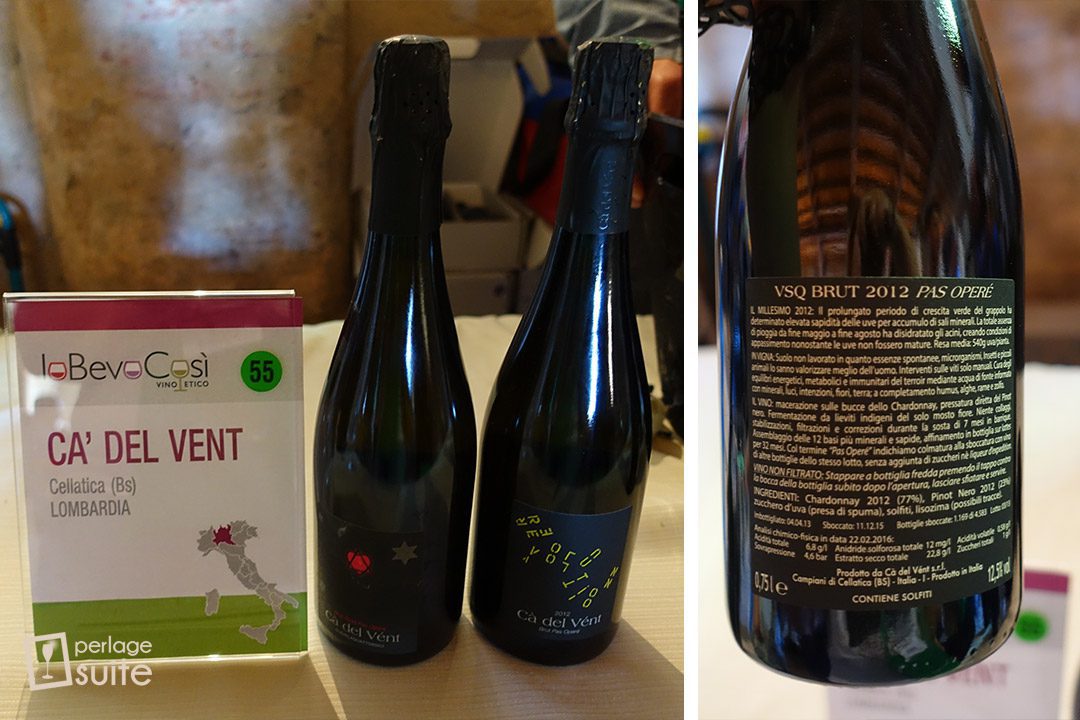
Moscatello di Saracena, Azienda Agricola Diana - Calabria
For my latest discovery, here I am in Calabria, a land unfortunately too much mistreated when it comes to wine. Due to the morphology of the land, the fact that it overlooks two seas, the mountains... well, it could produce even more extraordinary wines than many other regions historically devoted to fine wine. L'Azienda Agricola Diana, in the municipality of Saracena, produces a Moscato Passito Slow Food Presidium which to call delicious is reductive. A wine appreciated at the papal court since the 1500s, it was traditionally prepared by the families of Saracena to be largely donated to the city's lawyers and doctors, while a small part remained hidden in their cellars to be opened on feast days. Moscato di Saracena is made from an indigenous local grape variety, Moscatello, which is dried, selected and delicately pressed before being added to the cooked must and reduced by about 1/3 to concentrate the sugars and increase the alcoholic strength of Guarnaccia, Malvasia and Adduraca. After a long, slow fermentation, an amber-coloured wine is obtained, with an intense aroma of crunchy hazelnuts, caramelised fig, tonka bean, maracuja and fresh dates. Absolutely a meditation wine, ruined by any food pairing. I can only forgive a Prato almond cantucci, which goes well with its almondy finish. What can I say? I hope to soon make a trip to Saracena, Calabria, to discover all the producers of Moscatello di Saracena!
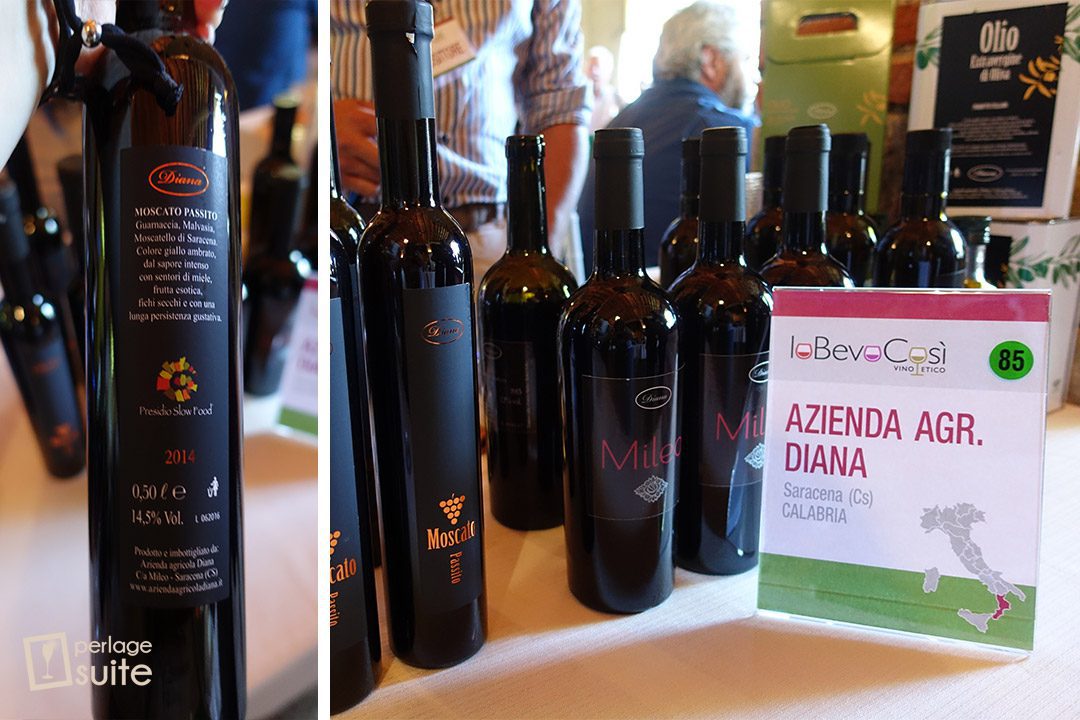
And finally some reconfirmations!
White Province of Pavia IGT, Tenuta Belvedere - Lombardy
By Gianluca Cabrini of Tenuta Belvedere I tasted a pinot noir made into sparkling white again... which I had already liked when I tasted it at Autoctona a few months ago! In particular, I'm talking about its white Provincia di Pavia IGT, made from pinot noir and riesling italico grapes from vineyards in the Oltrepò Pavese area, trained on guyot vines in clayey-calcareous soils of marine origin. The grapes are harvested in small 18 kg crates and softly pressed. After clarification by static decantation, the must obtained is placed in stainless steel tanks where it ferments at a controlled temperature with indigenous yeasts. At the end of fermentation, this partially sweet wine is left to mature for 6 months on its own yeasts. In spring, the wine is bottled and the natural increase in temperature favours re-fermentation in the bottle. As difficult as it was to assess the colour in the light of Villa Sommi Picenardi, the wine is a beautiful 'dense' white peach colour with nuances of its own skin. The nose has the typical yeasty scents that I always find in the 'whole' wines that I like so much (see the PS from Le Vigne di Alice or the Rural Bellenda), and in the mouth it is very fresh, acidic and savoury. I like it very much because I find it an unconventional wine, perfect for aperitifs or to be paired with even the simplest of risottos as long as they are richly whipped with butter and Parmesan cheese. Beware that it is not a wine for everyone or for those who have just approached this genre.
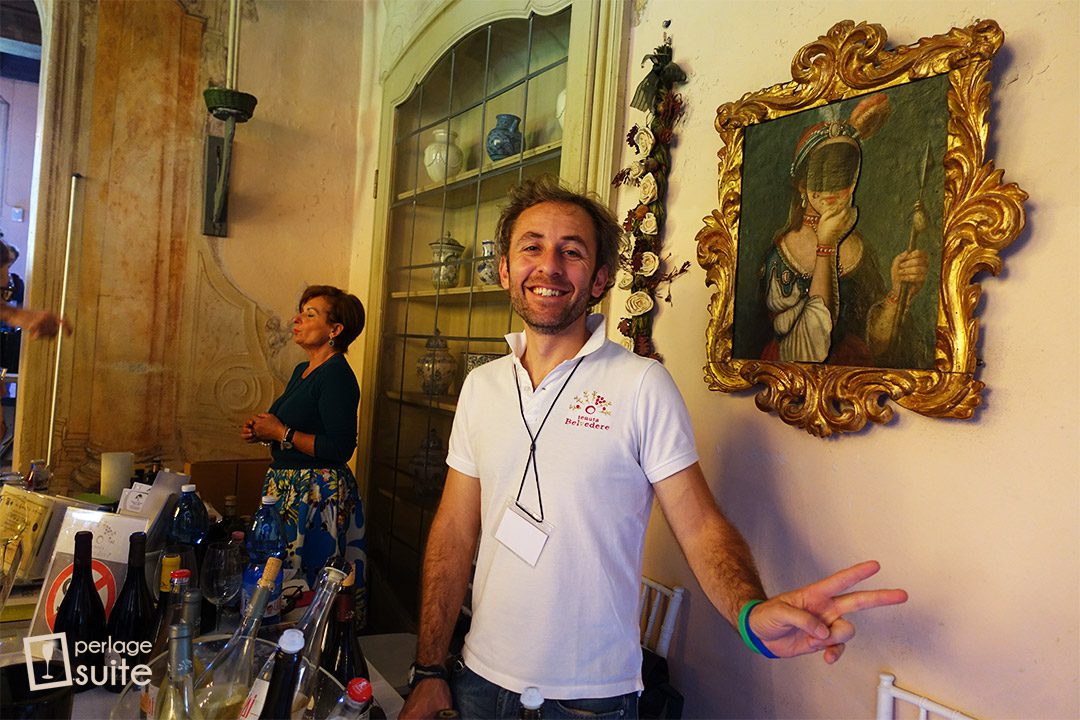
Sabbie Gialle, San Biagio Vecchio Winery - Romagna
Here we are in my homeland, Romagna, and more precisely in my home town, Faenza. Here you can find two excellences of Romagna: Il Ristorante San Biagio Vecchio of the talented Igor Morini and the winery of the same name in Lucia Ziniti, whom I am always happy to greet. Albana di Romagna is that legendary white grape capable of marrying magnificently with botrytis cinerea, of being 15°C and not feeling it, and of accompanying every imaginable homemade egg pasta. I tasted all the wines, but as always Sabbie Gialle gave me a little something extra. The 2015 vintage and the 2016 vintage are very different, granted that the 2016 is not yet ready. However, I am convinced that the 2016 will be even better than its predecessor, despite a very pronounced acidity that will surely soften in the months before release. The 2015 has an intense, honeyed nose with notes of elderflower and yellow peach. Very savoury, acidulous, and on the whole balanced thanks to a good alcohol content, it is perfect for our ever-present tortelloni butter and sage... which my beloved grandmother used to prepare for me every Thursday lunchtime... (how I miss her!).
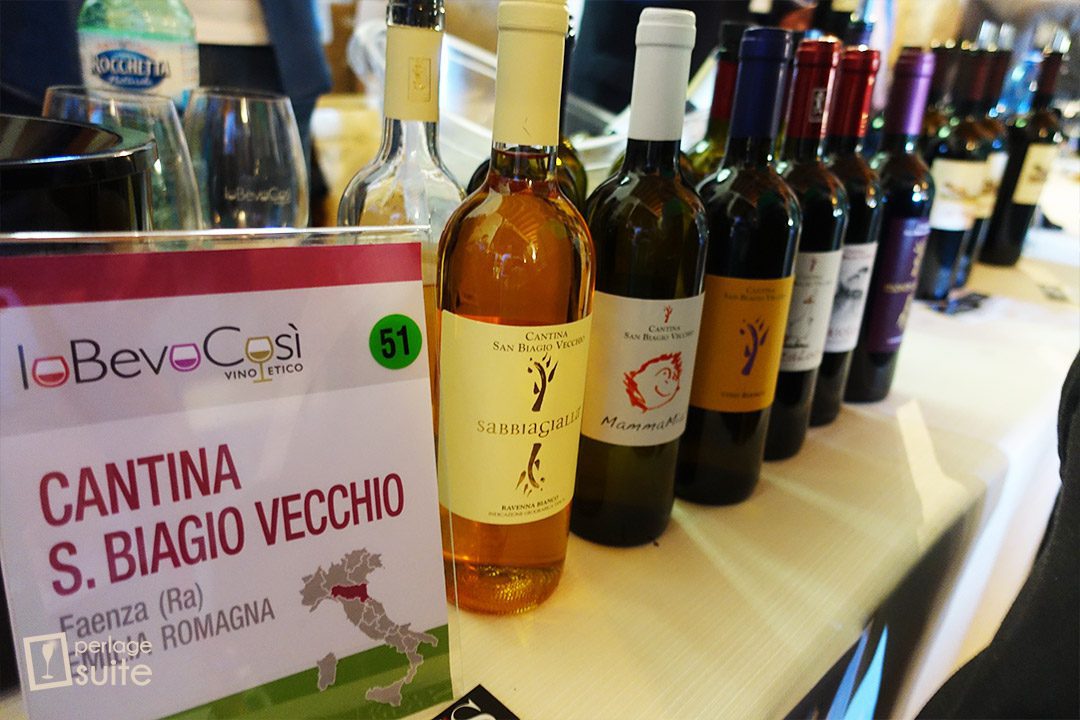
La Caldera, Andrea Occhipinti - Lazio
I got to know the wines of Andrea Occhipinti to theTresenda wine shop in Sarnico (BG)I'm going there again this evening with Viola to eat a delicious meat tartare... I really like this place, excellent wines that you can both buy and drink at the table, and catering that supports simple but excellent quality wine. Particularly that evening The CalderaThis is a wine I really fell in love with (to the point of buying a bottle... and with all the sample bottles I get to taste I haven't bought a bottle in over a year)! Grechetto Rosso grown on spurred cordon on volcanic lapillus soils, organic management of the vines, 15 days' maceration on the skins, spontaneous fermentation with only indigenous yeasts in small cement barrels, 18 months' ageing in steel/cement casks and at least two months' rest in the bottle. I also tasted the Alea Viva which I really liked, same processing as La Caldera but from Aleatico grapes. Having the same processing you can taste the characteristics of the grape variety: the Aleatico is much more fruity and intense, the Grechetto more spicy and floral.
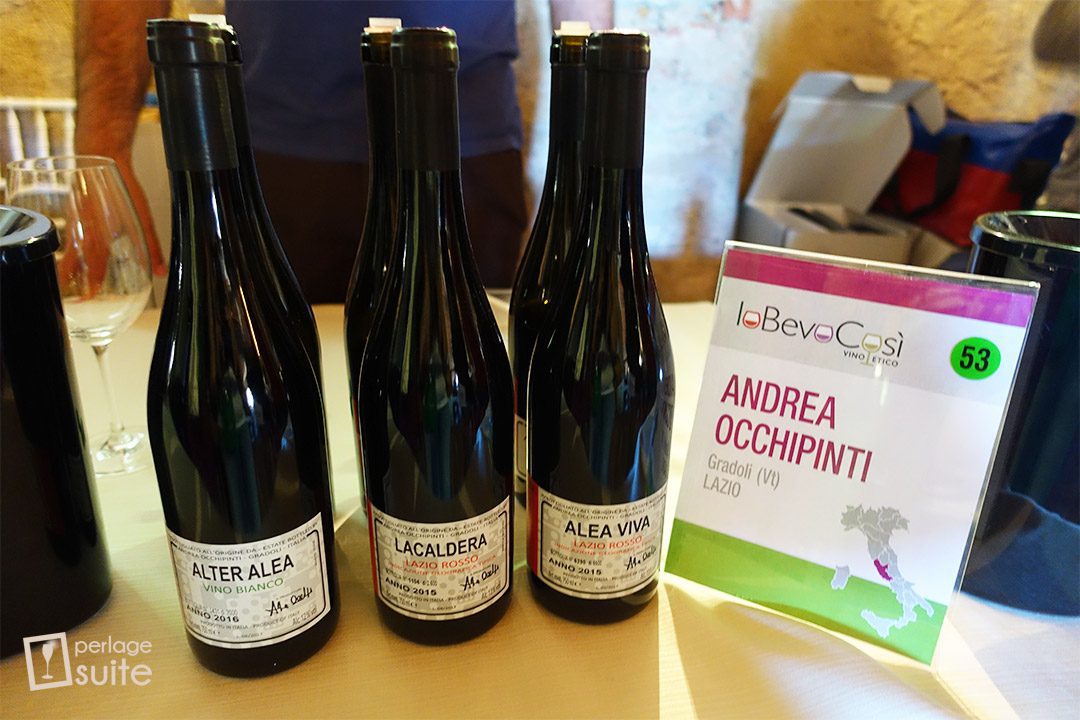
Lunch on the grass
The title is very Manet-esque, but in fact no cannottiere on the horizon, just a riot of winelovers! <3 I really enjoyed this delicious fried pizza eaten sitting on the grass with Annabella and her baby. On such a beautiful day, for me nothing is more satisfying than enjoying good food with good company in the midst of nature. Moreover, this fried pizza was really good, the dough almost seemed to melt in your mouth and it wasn't greasy at all. The fiordatte was of good quality and the little anchovies (which I love) went really well with it! Annabella took the Piedmontese hamburger from the other stand, and her dish looked great too (the portion was almost too large!). Overall, a note of credit goes to the organisation for putting in an above-average quality refreshment.
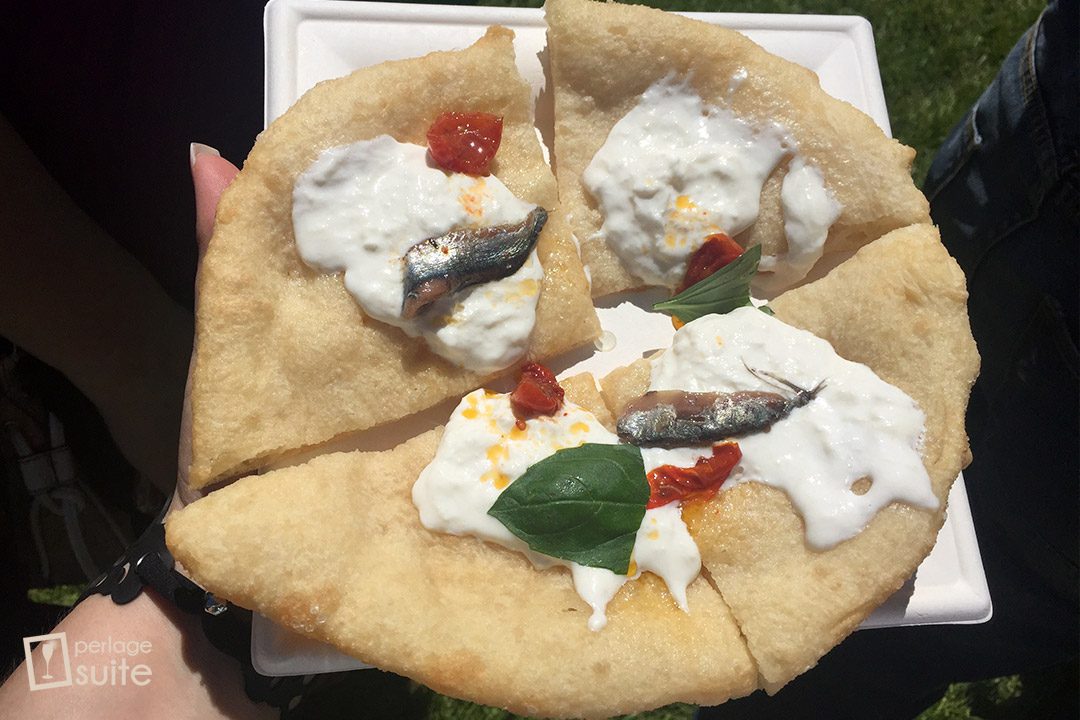
And dinner? Trattoria Pegaso da Adriano e Simone Liloni
Since I had promised Adriano Liloni, the 'subversive of taste' owner of Trattoria Pegaso in Gardone Riviera to dine at his place, I left at 6 p.m. for Lake Garda! And what doesn't one do for a gluttonous friendship? Adriano's nephew, Simone, is definitely the most passionate and cultured 'non sommelier' of wine I have ever met! Perhaps a little closed-minded about innovative and commercial wine projects, but with a really interesting tasting ability that needs to be explored. He let me taste a Metodo Classico sparkling wine that I did not know, namely theExtra Brut Millesimato by Lazzari, a company in Capriano del Colle.
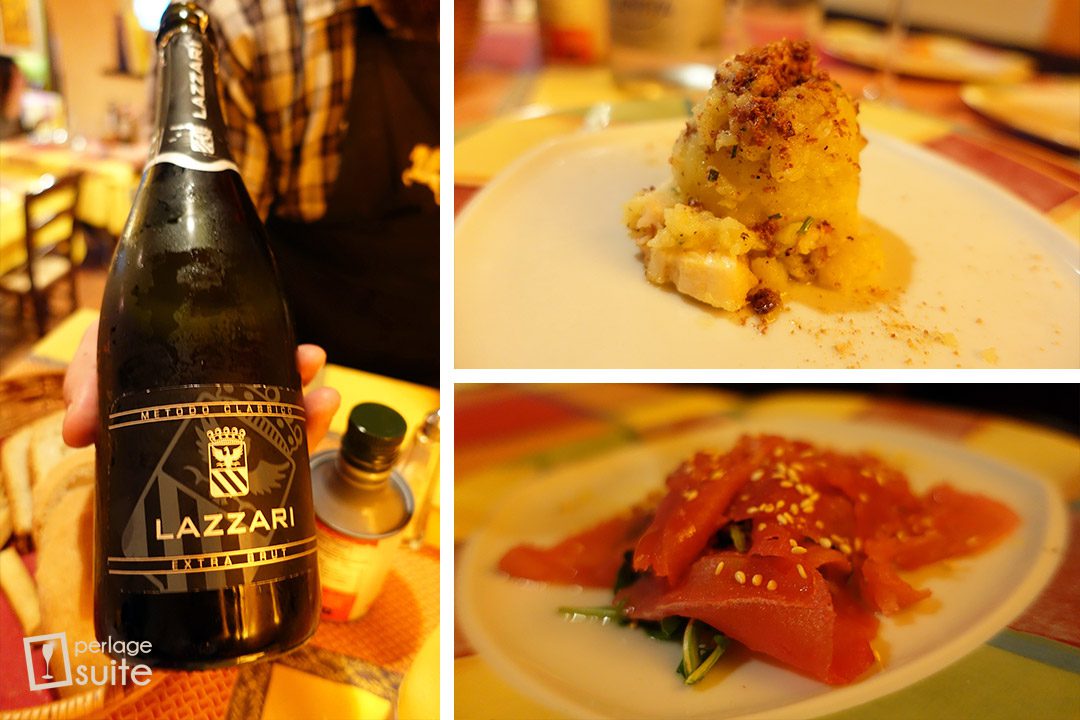
In this connection, I would like to take this opportunity to point out that this Sunday the Wine Tourism Movement organised 'Open Cellars"in Lombardy. Here are the participating companies and the programme for #winelovers. So I recommend to all wine lovers in the area to drop by and discover this bubbly, because it really is worth it. It has notes of saffron so intense that it steals the show from a Sauternes of Barsac! I don't know if it's the particular vintage... but I'll just have to visit Lazzari soon to find out 😉
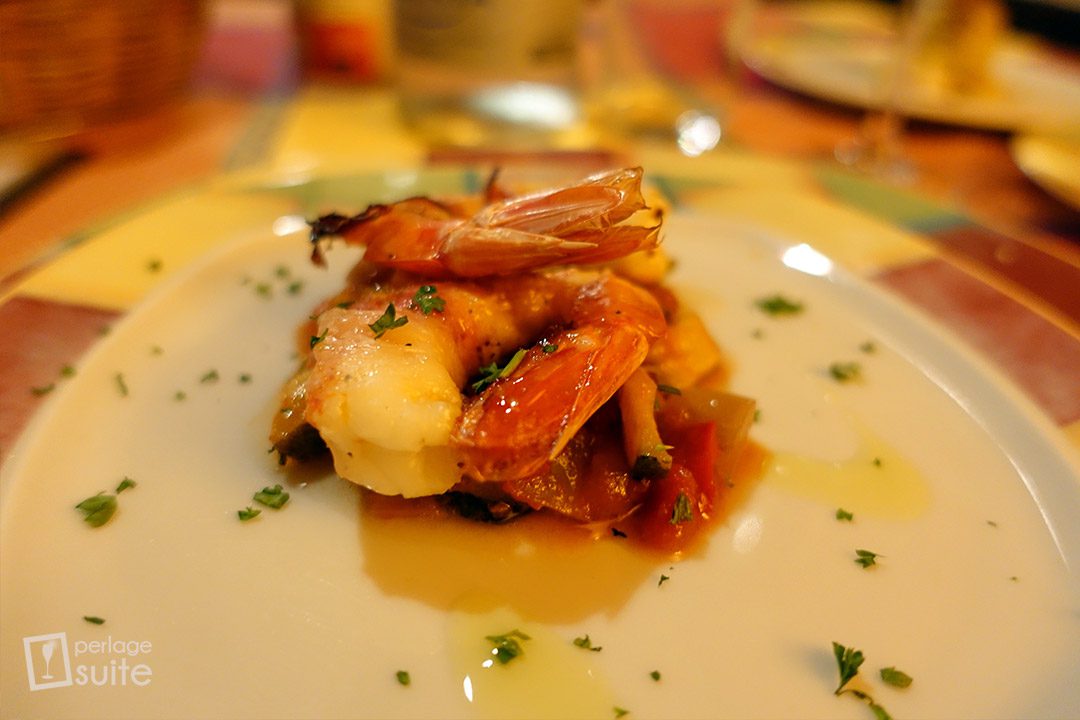
Since I was a guest, I left it (as I almost always do) to the 'host' to bring me what he considers to be his specialities! Adriano, as a good host, limited himself to asking me only 'meat or fish', but even here I left it to him because I eat everything... except Brussels sprouts! Well, maybe not even a cockroach I would eat, but luckily in Italy they are still not eaten even though it is rumoured to be the food of the future! Anyway, I would say that Adriano's cooking is simple, home-style of those houses where you eat well, with genuine flavours and really tasty combinations! The starters were all very pleasant, but my favourite was the prawn wrapped in bacon with orzo and caponatina (if I may make a suggestion, I would cut the vegetables into slightly smaller chunks to allow the flavours to blend even better). The paccheri with snapper, black cabbage and confit tomatoes had a very pleasant oil and taste, although I prefer 'risotto' pasta with the starch that makes the famous cream!
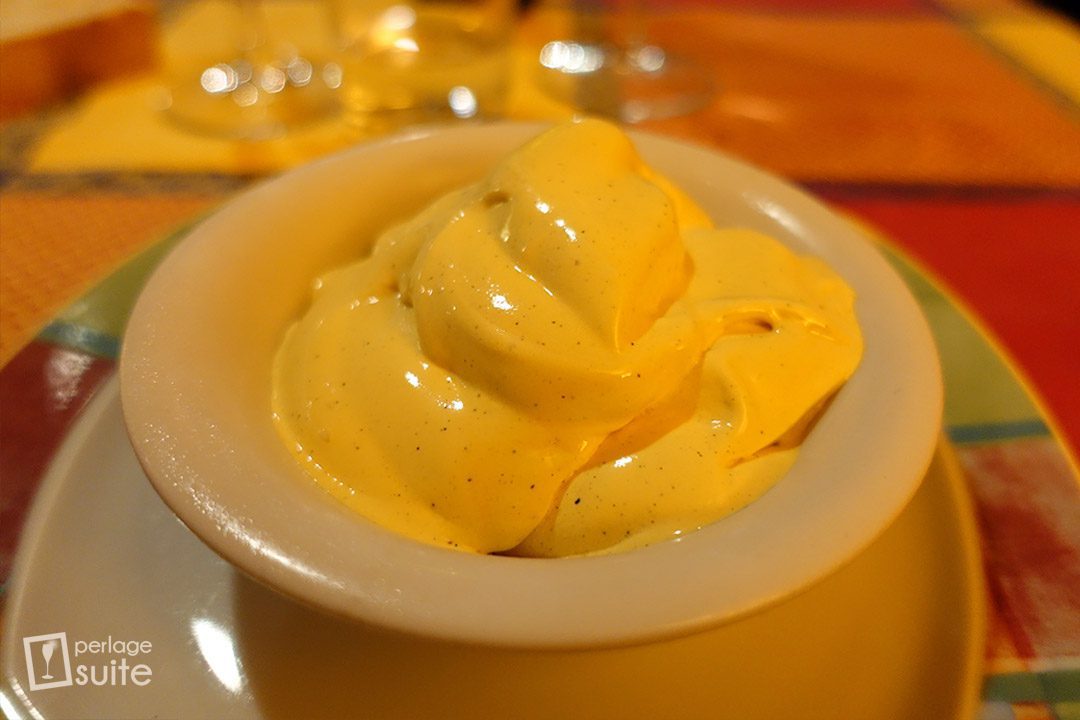
I want to emphasise the goodness of this homemade vanilla ice cream. I still have the spectacular taste of the highest quality vanilla in my mouth, for a rich cream with a delicious texture. I hope Adriano will make me a demijohn of it on 6 June, when I will eat the famous Brescian spit for the first time in honour of the script presentation of his new film! Actually, no, I'm on a diet... let's just have a taste 😀 Thank you Adriano for the invitation and to everyone for a wonderful day!
Cheers <3
Chiara
P.S. For all the photos in this article I thank UniversoFoto.com for the provision of the Sony RX100M4... it really is a little gem!
P.P.S. A final thank you to Leoni Alfredo of Top Wine for letting me taste some interesting wines, but especially such a wonderful cheese that I will always remember: Montebole di Marco Bernini! Defined by Identità Golose as the alchemist cheesemakerThis cheese was enough to make me realise that I absolutely must make a trip to the Tortona area to meet him for a tasting!

